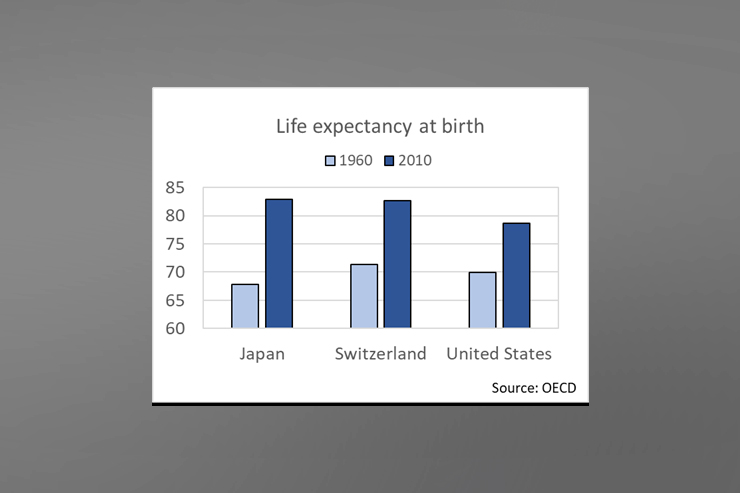Navigating the Challenges and Opportunities of an Aging Society

In today’s world, we find ourselves in the midst of a significant demographic shift, where the elderly population is steadily increasing. By 2050, it is estimated that the number of older individuals will double, reaching a staggering 1.5 billion. This aging society presents both economic challenges and opportunities, particularly in sectors like hospitality. How should businesses adapt to cater to this evolving demographic?
Understanding Population Aging
Population aging is an ongoing demographic phenomenon characterized by a continuous increase in the average age of individuals within society. In simpler terms, there are more elderly people in the population, and fewer young individuals. Figure 1 depicts this phenomenon through the old-age dependency ratio (OADR), which measures the number of individuals aged 65 or older relative to those aged 20 to 64. Currently, the OADR stands at 32% in the OECD on average.
While population aging has been relatively gradual over the past few decades, the future promises a more pronounced shift. Projections indicate that the OADR ratio will increase from 32% to 57% in the next 30 years, signifying a significant aging process. Certain countries will experience even more substantial changes.
The Role of Increased Life Expectancy
The primary driver of population aging is the significant increase in life expectancy, coupled with declining fertility rates. Advancements in medical science have extended human lifespans, while societal changes have led to smaller family sizes. This trend is consistent globally, although variations exist among countries, even at similar levels of economic development.
For example, Figure 2 illustrates that life expectancy at birth has increased more in Japan than in Switzerland or the United States. In just half a century, Japan saw a remarkable 15-year gain in life expectancy. Switzerland and the United States experienced more modest but still noteworthy increases of 11 and 9 years, respectively.
Figure 3 highlights differences in fertility rates, with Japan consistently having lower rates than Switzerland and the United States. This divergence explains why the OADR ratio is increasing more rapidly in Japan compared to other OECD nations.
Pension Challenges
Population aging poses significant challenges to pension systems. As individuals typically work between the ages of 20 and 64, an increasing OADR ratio signifies more retirees relative to the working-age population. This situation places a growing financial burden on younger generations to support their older counterparts.
Pensions in many countries are funded through social security contributions from current workers. As the fraction of retirees increases over time, it escalates the intergenerational financial burden. In many countries, the OADR is set to double in the next three decades. This means that while three working-age individuals support one retiree’s pension today, the ratio will shift to three working-age individuals supporting two retirees in 30 years.
Some nations, like Switzerland, employ diverse pension mechanisms to mitigate the financial impact of population aging. However, the challenge remains, albeit to a lesser extent. For example, Switzerland is set to vote on a new pension reform in September 2022, reflecting the ongoing efforts to address this issue. Pension reforms often encounter resistance, underscoring the complexity of managing this demographic shift.
Impact on Travel and Hospitality
Research has indicated that travel and tourist expenditures tend to increase during the early stages of adulthood and decrease with age. While income generally rises in the early stages of a career, leading to increased travel, post-retirement years often see a decline in travel, despite adequate income. As individuals age, travel can become more physically taxing.
Given the aging demographic, traditional hospitality businesses may face a decrease in customers. To counteract potential losses, some in the industry are exploring specialized offers for seniors. These packages might include wellness centers, tailored diets, and age-appropriate recreational activities. However, it remains uncertain if such offers can fully compensate for the reduced desire for travel in old age.
Another approach is the integration of hospitality services with retirement residences. New ventures aim to transform retirement homes into luxurious spaces resembling high-end hotels. The success of such ventures, whether they can extend beyond luxury segments, remains to be seen.
The Promise of International Travel
International travel has witnessed a remarkable surge in recent decades, with 50 times more international trips in 2018 compared to 1950. This upward trend is expected to continue, potentially offsetting the decline in travel due to population aging. However, businesses must adapt to these demographic trends to capitalize on this opportunity fully.
The Need for Timely Adaptation
Population aging is a gradual process, but the urgency varies depending on the perspective. Governments must act promptly as underfunded pension systems accumulate debt over time. For businesses in the hospitality sector, there is some time before booking rates decline, if they do at all. Nevertheless, the trend of population aging is undeniable, and early adopters of strategies catering to elderly travelers may reap significant rewards in the long run.




